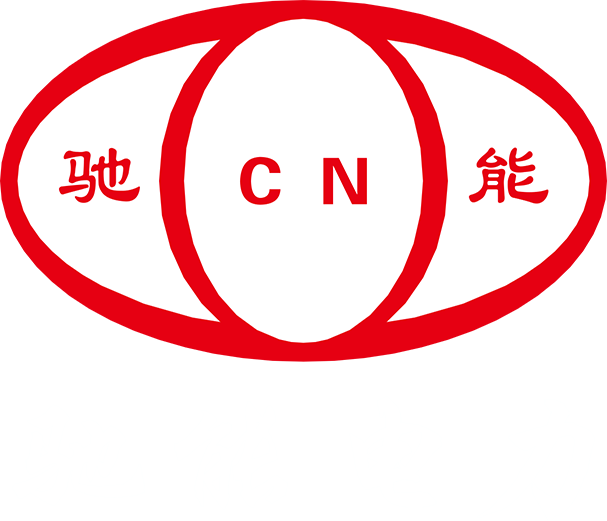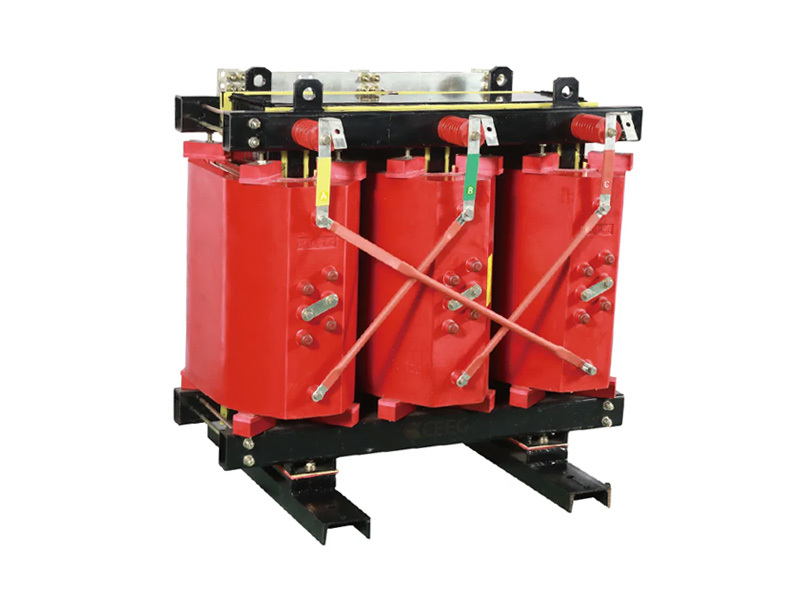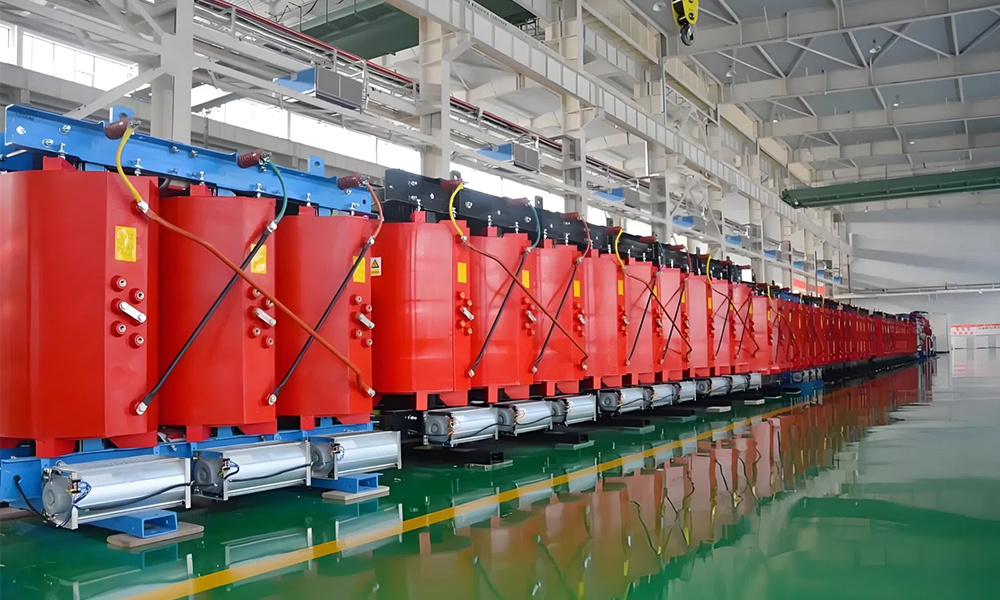He' Nan Chineng Electric Power Equipment Co., Ltd
The Role of Dry-Type Transformers in Enhancing Energy Efficiency
Aug 15,2025
The Role of Dry-Type Transformers in Enhancing Energy Efficiency
Table of Contents
- Introduction to Dry-Type Transformers
- What Are Dry-Type Transformers?
- Benefits of Dry-Type Transformers
- Energy Efficiency and Dry-Type Transformers
- Applications of Dry-Type Transformers in Various Industries
- Dry-Type vs. Oil-Filled Transformers: A Comparative Analysis
- Maintenance Practices for Dry-Type Transformers
- The Future of Dry-Type Transformers in Energy Systems
- FAQs about Dry-Type Transformers
- Conclusion
Introduction to Dry-Type Transformers
Dry-type transformers play a pivotal role in modern electrical systems, providing efficient voltage transformation with minimal environmental impact. Unlike traditional oil-filled transformers, dry-type transformers utilize air as the cooling medium, making them safer and more versatile in various applications. In this article, we will explore how these transformers enhance energy efficiency, leading to cost savings and sustainability in both industrial and commercial settings.
What Are Dry-Type Transformers?
Dry-type transformers are electrical devices that convert voltage levels in power distribution systems without using liquid insulation. Instead, they rely on solid insulation materials, typically epoxy, and air for cooling. This design eliminates the risk of oil spills and environmental hazards associated with traditional transformers.
**Key Features of Dry-Type Transformers:**
- **Environmentally Friendly:** The absence of oil reduces environmental risks.
- **Compact Design:** They occupy less space, making them suitable for urban settings.
- **Low Fire Risk:** With no flammable liquids, they pose a minimal fire hazard.
- **Versatility:** Suitable for indoor and outdoor installations.
By understanding the construction and operational principles of dry-type transformers, we can appreciate their growing popularity in the energy sector.
Benefits of Dry-Type Transformers
The benefits of dry-type transformers extend beyond their construction. They bring a range of advantages that significantly enhance energy efficiency and operational effectiveness.
1. Improved Energy Efficiency
Dry-type transformers are designed to minimize energy losses during voltage conversion. With lower no-load losses and better regulation, they ensure that more energy reaches the end-user, directly impacting overall system efficiency.
2. Lower Maintenance Costs
Due to their robust design and reliable materials, dry-type transformers require minimal maintenance compared to their oil-filled counterparts. This reduction in maintenance translates to lower operational costs over time, making them an attractive option for businesses.
3. Enhanced Safety Features
The risk of fire and environmental pollution is significantly reduced with dry-type transformers. Their design conforms to strict fire safety regulations, making them ideal for use in sensitive environments like hospitals and schools.
4. Longevity and Reliability
Dry-type transformers typically have a longer lifespan due to their solid insulation system. They are less susceptible to degradation caused by moisture or environmental contaminants, ensuring that they deliver consistent performance over time.
5. Flexibility in Installation
These transformers can be installed in various locations, including indoor spaces and areas with limited ventilation. Their adaptability makes them suitable for a wide array of applications, from data centers to industrial plants.
Energy Efficiency and Dry-Type Transformers
The primary focus of dry-type transformers is to enhance energy efficiency in electrical systems. They achieve this through several mechanisms:
1. Reduced Energy Losses
Energy loss during voltage transformation is a significant concern for any electrical system. Dry-type transformers utilize advanced materials and design innovations to minimize these losses, ensuring that a larger proportion of input energy is converted into useful output.
2. Optimal Load Management
By maintaining voltage levels and reducing fluctuations, dry-type transformers allow for optimal load management. This stability helps in retaining energy efficiency across various operational loads, ensuring that equipment operates within the desired parameters.
3. Integration with Renewable Energy Sources
As the world shifts towards renewable energy, dry-type transformers play a crucial role in integrating solar and wind power into existing electrical grids. Their efficiency and reliability make them ideal for managing the variable output of renewable energy sources.
Applications of Dry-Type Transformers in Various Industries
The versatility of dry-type transformers allows for their application in numerous industries, including:
1. Commercial Buildings
In commercial buildings, dry-type transformers provide reliable power distribution while ensuring energy efficiency. They are commonly used in shopping malls, offices, and hospitals, where safety and reliability are paramount.
2. Industrial Facilities
Manufacturing plants benefit from the enhanced energy efficiency of dry-type transformers. They support heavy machinery and high-power operations while minimizing energy waste, leading to substantial cost savings.
3. Data Centers
Data centers, which require continuous and reliable power, find dry-type transformers essential for stabilizing voltage levels. Their low maintenance requirements also make them a smart choice for this energy-intensive sector.
4. Renewable Energy Systems
Dry-type transformers are integral to the efficiency of solar and wind energy systems. They help ensure that the energy harvested from these sources is effectively channeled into the grid or stored for later use.
Dry-Type vs. Oil-Filled Transformers: A Comparative Analysis
While dry-type transformers offer many advantages, it is essential to compare them with oil-filled transformers to understand their unique benefits fully.
1. Environmental Impact
Oil-filled transformers carry a higher risk of environmental contamination due to potential leaks. Dry-type transformers eliminate this issue, making them a more sustainable option.
2. Safety and Risk Management
With no flammable liquids, dry-type transformers present lower fire hazards. This aspect is particularly crucial in urban settings or locations where safety is a priority.
3. Maintenance Requirements
Oil-filled transformers require regular maintenance to check for leaks and monitor oil levels. In contrast, dry-type transformers require less frequent attention, making them more convenient for operators.
4. Installation Flexibility
Dry-type transformers can be installed in a wider variety of settings. Their compact design allows for installation in areas where space is limited, unlike many oil-filled transformers that need more extensive containment systems.
Maintenance Practices for Dry-Type Transformers
To ensure the longevity and efficiency of dry-type transformers, proper maintenance is crucial. Here are best practices to follow:
1. Regular Inspections
Conduct regular visual inspections to check for any signs of wear or damage. Early detection of issues can prevent costly repairs and downtime.
2. Clean the Transformer
Dust and debris can accumulate on the transformer over time. Regular cleaning helps maintain optimal cooling and prevents overheating.
3. Monitor Operating Temperatures
Keep track of the operating temperatures to ensure they remain within the recommended range. Overheating can significantly reduce the lifespan of the transformer.
4. Testing Performance
Perform periodic tests to assess the transformer's performance, including insulation resistance testing and power factor analysis. These tests provide insight into the overall health of the transformer.
The Future of Dry-Type Transformers in Energy Systems
As the demand for energy-efficient solutions continues to rise, the role of dry-type transformers will expand. Innovations in technology and materials will lead to even more efficient designs that can better handle the integration of alternative energy sources.
**Emerging Trends:**
- **Smart Grid Integration:** Dry-type transformers will likely play a crucial role in the development of smart grids, allowing for real-time monitoring and optimization of energy distribution.
- **Sustainability Initiatives:** As businesses focus on reducing their carbon footprints, dry-type transformers will be a key component in achieving sustainability goals.
- **Enhanced Performance Materials:** Ongoing research into advanced insulation and cooling materials will further enhance the performance of dry-type transformers.
FAQs about Dry-Type Transformers
1. What makes dry-type transformers environmentally friendly?
Dry-type transformers use solid insulation and air for cooling, eliminating the risk of oil spills and reducing environmental impact.
2. How do dry-type transformers compare to oil-filled transformers in terms of efficiency?
Dry-type transformers typically have lower energy losses, making them more efficient than oil-filled transformers in many applications.
3. What industries commonly use dry-type transformers?
Industries such as commercial buildings, manufacturing plants, data centers, and renewable energy systems frequently utilize dry-type transformers.
4. Are dry-type transformers safe for indoor use?
Yes, dry-type transformers are considered safe for indoor use due to their low fire risk and absence of flammable liquids.
5. How often should dry-type transformers be maintained?
Regular inspections and maintenance should be performed at least once a year, with more frequent checks in high-demand environments.
Conclusion
Dry-type transformers are transforming the landscape of energy efficiency in modern electrical systems. Their ability to enhance energy conservation while ensuring safety and reliability makes them an invaluable asset in various applications. As industries continue to prioritize sustainability and efficiency, dry-type transformers will play a crucial role in shaping the future of power distribution. By choosing dry-type transformers, organizations not only reduce their environmental impact but also reap significant economic benefits, paving the way for a more sustainable energy future.
PREVIOUS:










